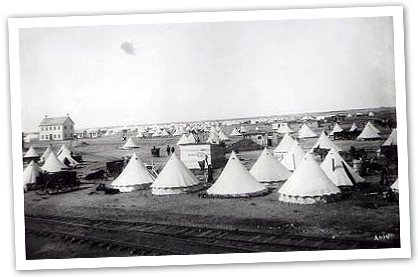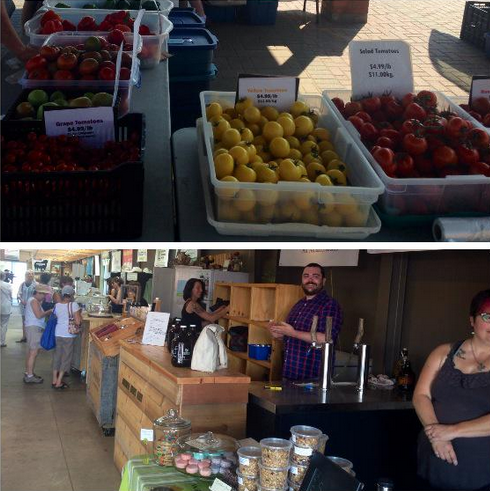Watch above: It became a village in the 1900s then amalgamated with two other existing neighbourhoods to form Saskatoon. Wendy Winiewski takes a look at the history of Riversdale and how far it’s come.

SASKATOON – Riversdale was officially incorporated as a town in 1905. One year later, in 1906 the community merged with downtown and Nutana to form the City of Saskatoon.
Few neighbourhoods in Saskatoon have a longer, or more storied history, than Riversdale. Some elements are best left as a memory, others continue defining this unique community, presently.
In 1903, more than 1500 Barr Colonists from the Britannia Colony arrived here by rail. The were on their way to Lloydminster. The colonists bought supplies and prepared for the remainder of the trek. This provided a financial boost to the area. In addition, some of the group stayed behind.

Around the same time, J. H. C. Willoughby and John Butler began subdividing land in the area and selling it as a commercial enterprise, the intention was to make a profit. By splitting the land into small sections, City of Saskatoon archivist Jeff O’Brien explained, the neighbourhood’s foundation was set.
“Unlike Nutana and the downtown, the streets are narrower, the lots are smaller and consequentially the houses tend to be smaller so what happens with Riversdale is, it’s more affordable,” said O’Brien.

Get daily National news
READ MORE: Riverhouse Art Gallery a colourful landmark in revitalized Riversdale
Over the decades, the transient community became home to the notorious Albany and Barry hotels. Crime ran rampant and vacancy climbed to 42 per cent.
A recent revitalization has taken Riversdale back to its glory days. The unprofitable pre-First World War Farmers’ Market has a new identity.

“Our role is huge in this neighbourhood,” said Farmers’ Market operations manager Martin Dyck. “We have markets Wednesday, Saturday, and Sunday and we have lots of people coming in.”
According to Dyck, it attracts residents from all over Saskatoon, and some from the communities surrounding the city.
“It makes a lot of the local restaurants a little busier when people are out in the neighbourhood,” said Dyck, adding that’s the added bonus of the market.
It has become the heart of the neighbourhood. The Farmers’ Market is a place residents go to hang out, stroll along River Landing, and watch the fast advancing construction of The Banks condo/townhouse project.
Sales are soaring according to Chris LeFevre, the mastermind behind the project. Residing in British Columbia, this land developer touts The Banks as his most sought after project so far, giving much credit to the location.
- Canadian woman charged with illegally crossing into U.S., kicking border agent’s face
- A new ‘cold’ war? Canada looks to bolster Arctic security, sovereignty
- Canadian furniture industry still ‘reeling’ after Trump pauses tariff spike
- Ottawa propose fines of up to $1M for violating foreign influence registry rules
With the Farmers’ Market as the heart of Riversdale, 20th Street can be defined as the backbone.
“Fundamentally, 20th Street is the same as it always has been,” said O’Brien.
“You look up and down 20th Street, go through the old directories and you see all these little mom and pop businesses all these little family run businesses and all these people with non-anglo names,” similar to what dominates in the area to this day according to O’Brien.
New businesses abound, entrepreneurship flourishes, restaurants and coffee shops add to the ambiance of the neighbourhood.
Through it all, the Roxy Theatre remains a community staple. Opening in 1930, the Roxy closed in the mid ’90s until it was purchased by Magic Lantern Theatres and reopened in 2005.

“There’s many theatres you go to now when you sit down and the curtain opens up,” explained the general manager, Jordan Delorme. “That’s a really nice aesthetic and something unique about this theatre”.
The theatre’s popularity is thriving with attendance numbers increasing steadily since 2008 according to Delorme.
The increasing popularity theme applies to the whole neighbourhood over the past decade, as a rejuvenation and revitalization keeps the old, feeling new in Riversdale.






Comments